Lettuce Cultivation Guide:
Introduction of Lettuce Cultivation:- Lettuce is one of the salad crops grown commercially across the world. Lettuce was grown for centuries and was originated in Asia continent. The demand for salad crops are increasing day by day due to their diet value and medicinal values. In India, it is yet to gain significance in terms of commercial crop cultivation. Lettuce is a leafy vegetable which can be consumed raw. Among all the lettuce varieties, Romaine lettuce variety is famous for its nutrition values. Lettuce is mainly used in food items like wraps, sandwiches apart from using as leafy vegetable. China is top producer of lettuce in the world. Lettuce plant leaves are mainly in the green and red colour spectrums. Lettuce produces smooth, radical, spirally arranged leaves. There are other improved varieties whose colors are available in yellow, gold or blue leaves. When it comes to shape, they have a wide range of shapes and texture from dense head to iceberg type. Lettuce plants can be spread about 15 to 30 cm. Lettuce can be grown in greenhouse, polyhouse and even hydroponically. However, proper business plan and farm management practices make the lettuce farming as successful commercial business. In India, there is a huge potential due to its value in diet. One can get decent profits in lettuce cultivation due to high market demand and growing international food chains.
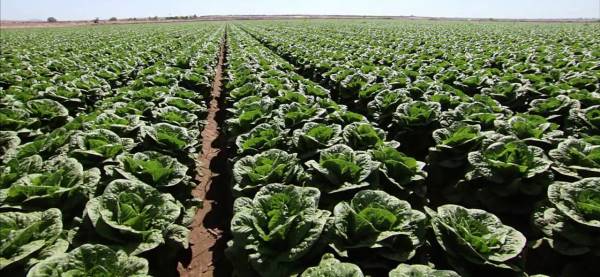
Family Name of Lettuce:- Asteraceae.
Botanical/Scientific Name of Lettuce:- Lactuca sativa L.
Health Benefits of Lettuce:- The following are the health benefits of Lettuce.
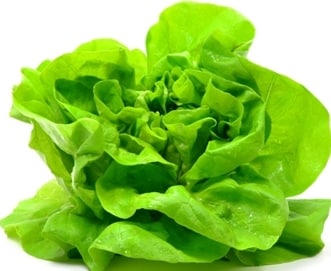
- Lettuce has low calorie content and zero fat.
- Lettuce is good source of vitamins and minerals.
- Lettuce helps in weight loss.
- Lettuce helps to reduce anxiety.
- Lettuce protects neuronal cells.
- Lettuce is heart healthy and contains omega-3 fatty acids.
- Lettuce helps in sleep disorder.
- Lettuce helps with insomnia.
- Lettuce has good antioxidant properties.
- Lettuce prevents the cancer cell growth.
- Lettuce lowers blood cholesterol levels.
- Low glycaemic Index, hence good for diabetic patients.
Common Names of Lettuce:- Tshilai, Lettuce.
Local Names of Lettuce in India:- Salad Ke Patte (Hindi), Lettuce Keerai (Tamil), Uvarcheera / Uluvacheera (Malayalam), Lettuce Koora (Telugu), Lettuce Soppu (Kannada), Lettuce (Bengali), Lettuce (Gujarati), Saladchi Paane (Marathi), Lettuce (Oriaya).
Varieties of Lettuce :- Basically, Lettuce is grouped into four classes.
- Losse-leaf (Red and Green Leaf): This type has delicate taste and leaves.
- Cos or Romaine: This type is classic Greek salad and has sweet and crunchy taste.
- Crisp head or Head lettuce: Iceberg. White on the inside and has crisp texture and mild taste.
- Butter head: Boston and Bibb. This type has large green leaves that are soft and sweet.
Climate Requirement for Lettuce Cultivation:- Well, Lettuce is cool season crop and requires monthly average temperature about 15 °C for optimal growth. This crop does not thrive well in hot weathers. However, among four types of lettuce, the leafy types mature quickly and are more suited for warm climates. Lettuce can be grown round the clock and requires shade especially in warm climatic conditions. Usually, lettuce grows best in the spring and fall seasons.
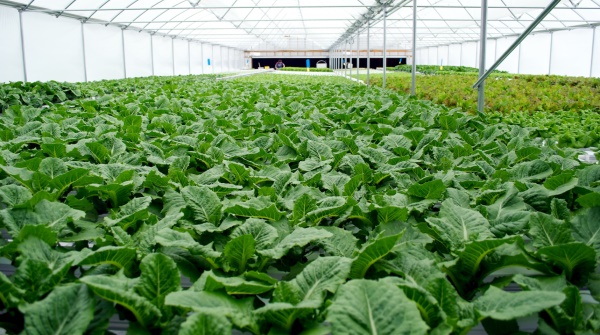
Soil Requirement of Lettuce Cultivation:- Lettuce can be cultivated in wide variety of soils. However, Good fertile (rich in organic matter) friable loamy soils having high water holding capacity and good drainage is ideal for lettuce production. Lettuce crop is very sensitive to acidic nature, so avoid growing lettuce in high acidic soils. The best suitable soil pH for lettuce cultivation ranges from 5.5 – 6.5. Uniformly distributed moisture will result in good yield and quality of leaf. Commercial growers should go for soil test before starting the crop. Based on test results, any micro-nutrient gap should be filled. Well-rotten organic manure like cow dung or any garden compost works well for plant growth.
Land Preparation for Lettuce Cultivation:- Land should be prepared to get into friable and fine tilth stage. This can be done by giving 3 to 4 deep ploughings with a country plough or tractor. If the crop is grown on large scale, soil testing is recommended to find out the nutrient deficiencies in soil. According to soil test results, micro-nutrients should be supplemented along with organic manure. Make sure to have beds for proper water drainage.
Propagation in Lettuce Cultivation:- Propagation of lettuce is done by seeds.
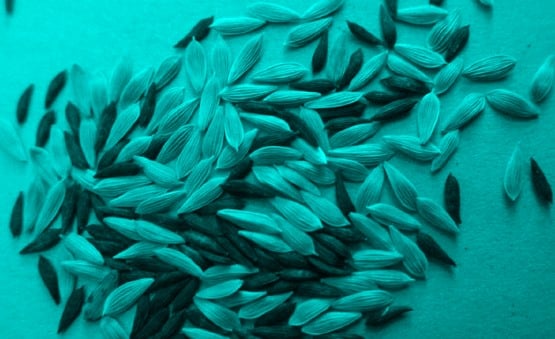
Planting , Seed Rate and Spacing in Lettuce Cultivation:- In India, one can go for sowing after rainy season. As leaf varieties are mostly grown, they can be sown directly in the field and raised on nursery beds (seedlings of 4 to 5 weeks can be transplanted). The lettuce grown on nursery beds can be transplanted in the main filed. When it comes to sowing distance, lettuce seeds can be sown in rows 15 to 25 cm part. Generally, one hectare land requires 2 to 3 kg of seeds (seed rate). Usually germination of lettuce seeds depends on temperature. The ideal temperature is required for lettuce is about 20 °C to 22 °C.
Irrigation in Lettuce Cultivation:- Uniform moisture supply is very important for proper plant growth. Irrigation should be carried out once in 4 to 5 days. Make sure to drain out the excess water in case of heavy rains.
Manures and Fertilizers in Lettuce Cultivation:- As the lettuce crop responds to manures and fertilizers very well it is very important to apply these in time. When it comes to manure and fertilizer requirement, 15 to 20 tonnes of well decomposed farm yard manure(FYM), 90 kg N (for leaf growth, Nitrogen is very important) , and 60 to 65 kg each of Potash and Phosphorus per ha should be applied for better yield of lettuce crop.
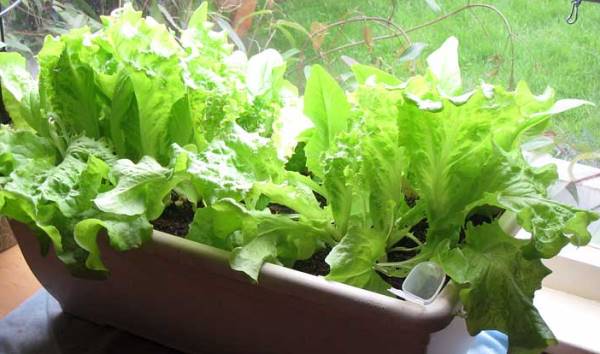
Intercultural Operations in Lettuce Cultivation:- For proper plant growth and yield, hoeing and weeding operations should be carried out. Shallow cultivations should be done as part of the intercultural operation as the root system of lettuce is not deep rooted.
Pests and Diseases in Lettuce Cultivation:- In any crop, pest and disease control play major role for getting quality produce and higher yields. The following are the main pests and diseases found in Lettuce cultivation.
- Pests: Cutworms, Aphids and American bollworm are common pests found in lettuce cultivation.
- Control Measures: For controlling above mentioned pests, contact local horticulture department for solutions.
- Diseases: Soft rot, Downy mildew and mosaic are common diseases found in lettuce cultivation. However, selecting disease resistant seeds are most important to avoid these common diseases.
- Control Measures: For controlling above mentioned pests, contact local horticulture department for solutions.
Harvest in Lettuce Cultivation:- Harvesting of lettuce depends on the variety(cultivar). Leaf lettuce varieties can be harvested when the leaves are tender and immature for fresh consumption. Generally, first harvesting should take 40 to 60 days after sown in the field. In case of head varieties, the crop is harvested when it has attained a good size and solid head. While handling care should be taken not to damage the wrapper leaves. Cos or Romaine and Head type lettuce mature in two months and you should pull the entire plant. Leafy type will mature in six weeks, cut the outer leaves when mature to allow center leaves to develop. Bibb type of lettuce will be ready for harvesting in 6 to 7 weeks and should pull the entire plant.
Yield in Lettuce Cultivation:- Yield of any vegetable crop depends on many factors like soil type, cultivar (variety), irrigation, climate and other farm management practices. On an average, one can obtain head lettuce about 11,000 to 12,000 kg per 1 hectare land. Generally, leaf type lettuce give comparatively higher yields.
Marketing of Lettuce:- As lettuce storage (shelf) life is short, it should be marketed as fresh one. Transport this wonderful leafy vegetable to nearest markets as soon as harvesting is done.
1.what is the total annul l income of lettuce per off hector
2.what is time line of one harvest of lettucs?
3.time line of harvest of lettuce?
Wait for some time, we will update about cost and profit of Lettuce and Project report.
Hi! I am writing to find out if you can any leads of farmer or suppliers with whom I could procure vegetables, fruits, lettuce for a commercial kitchen. Thank you.
I have an aquaponics farm in bhopal. I will able to commercially supply all varieties of lettuce by oct 19. I am looking for buyers.
I would like to deal with YOU for lettuce supply.
Reddy sir, I am your huge fan.I like the way you put so simple all those thing, which a particular subject teacher can’t explain. Sir, i am a agri student. I also want be a writer like you to simplify things to farmers and students. Please guide me sir.